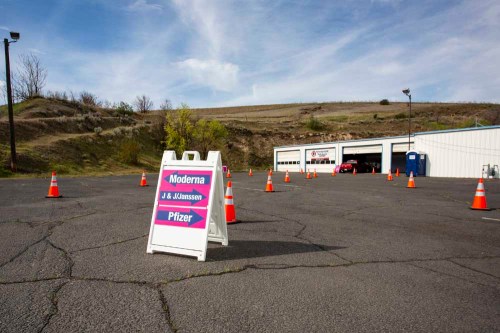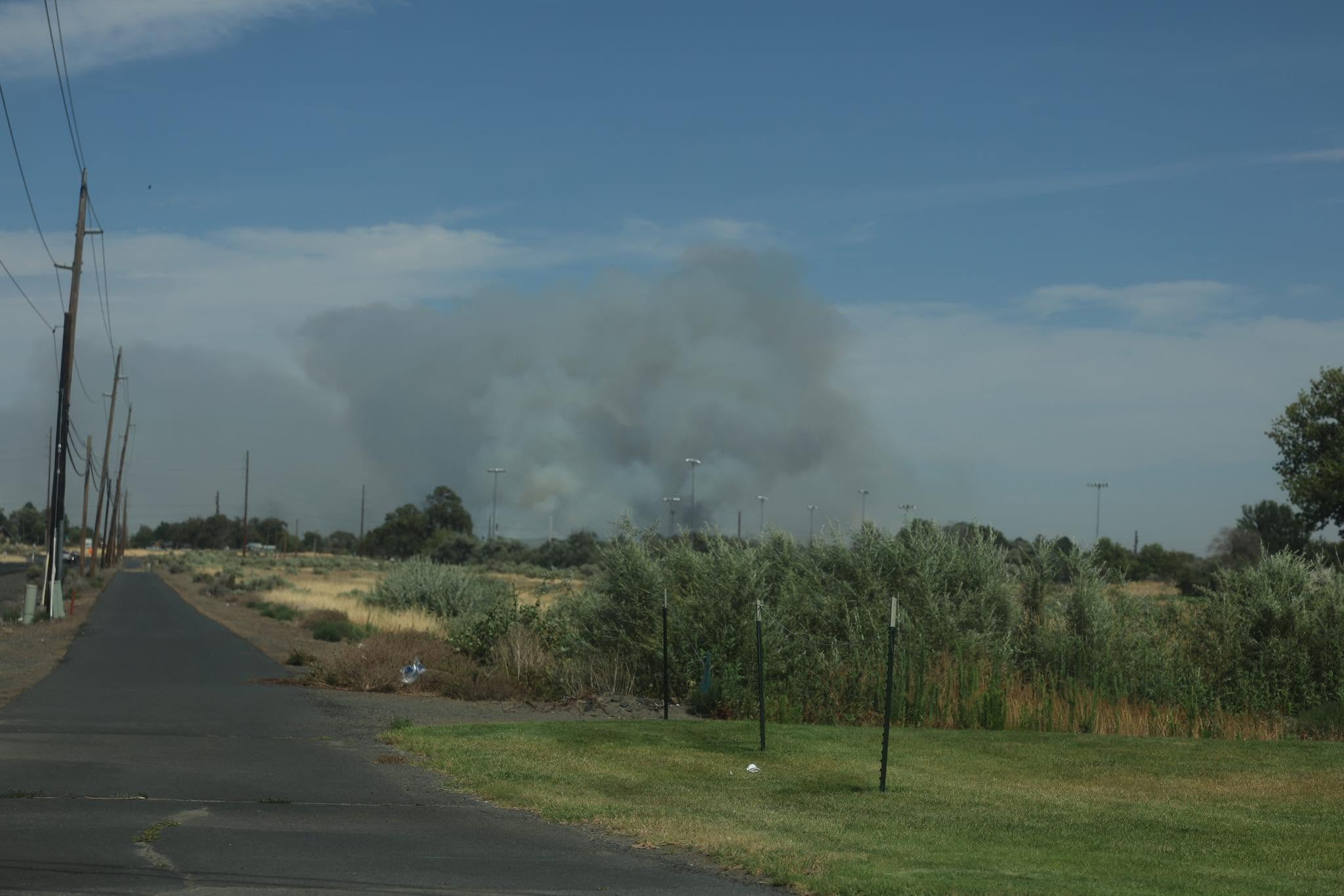Umatilla County remains at high risk in Gov. Kate Brown’s final risk level assessment; reports sharpest weekly case spike since April
Published 7:00 am Thursday, June 24, 2021

- After an initial morning rush, lines sit empty at a Umatilla County Public Health mass COVID-19 vaccination site in Pendleton on April 30, 2021. The county is one of only six that remains in the high risk category according to the state’s latest coronavirus risk level assessment on June 22.
PENDLETON — Umatilla County is one of six counties in Oregon that remained at high risk in Gov. Kate Brown’s latest, and final, coronavirus risk level assessment.
Brown, who announced the risk levels Tuesday, June 22, said Oregonians no longer will hear about risk levels as the state inches closer to the 70% vaccine threshold. As of June 22, the state was less than 45,000 people shy of the goal, which will mark the end of pandemic-related health and safety restrictions in the state. An Oregonian/OregonLive tracker says Oregon should reach the mark by July 3.
Among counties in Northeastern Oregon, Umatilla County is an outlier when it comes to risk levels. Baker, Union, Wallowa and Morrow counties all remained at lower risk for weeks, and some for months.
Umatilla County Public Health Director Joe Fiumara said there could be a number of explanations for this, including the county’s greater population density and its industrial facilities increasing the risk of infection, but it’s difficult to pin exactly why the county continues to report relatively high case counts.
The data shows Umatilla County ultimately will be dragged across the finish line when the state reaches 70%. But county officials are worried that reopening may lead to case spikes in the county due to its low vaccination rate.
“Somehow, being over the line gives the impression that COVID is over,” Umatilla County Commissioner George Murdock said. “And that’s a false assumption. It’s not. It’s not over, even if Oregon opens up, it’s not over here. It’s going to continue.”
Last week, Umatilla County reported 76 cases, 35 more than the previous week, according to county health data. That’s the steepest weekly case spike the county has reported since April, after reporting declining weekly cases for five straight weeks.
“We were trending downwards, and that (case spike) keeps us solidly in that high risk unfortunately,” said Fiumara. “I wish it wasn’t this way. But, we’re waiting for the rest of the state to carry us across the goal line.”
Fiumara said much of the county’s cases are being traced back to small social gatherings but with no large outbreaks. However, he said people who have been exposed often are reluctant to cooperate with contact tracers, all but assuring cases are going unreported and making it difficult to track the spread of infection.
Fiumara and Murdock each said nearly all reported cases are coming from people who have not been vaccinated against COVID-19.
Vaccine rates continue to lag behind state
The county has lagged behind statewide vaccination rates for months. It has the third lowest vaccination rate per capita in the state, according to state health data. Only 31.7% of residents have been fully vaccinated against COVID-19, also the third lowest in Oregon, despite reporting one of the highest infection rates in the state, according to an Oregonian/OregonLive database.
“We have vaccination sites open all over the county,” Murdock said. “It is not an accessibility problem. We have enough sites, and we have enough vaccine. We just don’t have enough people willing to get a shot.”
Murdock described the county’s vaccine rate as “extremely demoralizing.” He added he believes residents likely will be less inclined to get vaccinated when restrictions are lifted.
Fiumara said it’s been frustrating to see people choose not to get vaccinated, as it has likely contributed to the county remaining among the state’s most stringent restrictions for longer than almost any county in Oregon.
“We knew what the outcome of that choice was going to be,” Fiumara said of residents not getting vaccinated. “We were going to stay in high risk. We were going to stay in these restrictions longer.”
Fiumara and Murdock each said they are glad the county’s economy is primed to reopen when the state reaches 70%. But with the county’s vaccination rate remaining low, they said it’s possible cases could spikes around the large upcoming summertime events and holidays.
“I think we’ll experience cases of COVID longer than most other counties,” Murdock said.









